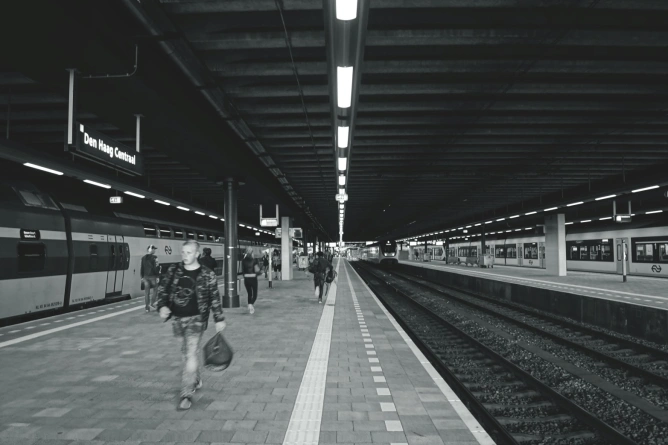
Brussels, November 11, 2025 – The official assessment of the European Union Agency for Railways (ERA) reveals a series of structural problems that hinder the integration of the European railway market: overly complicated procedures, insufficient resources, national rules still in force, and slow progress in the digitalization of the ERTMS system. The Commission announces that, by 2026, it will propose a revision of the ERA Regulation to simplify processes and strengthen the agency's role.
The Commission's report speaks of a system that works, but not at the expected level. Although ERA has fulfilled a large part of its duties established by the Fourth Railway Package, the assessment shows that the institution's performance remains below the declared ambitions of the Union. The mandate of ERA was meant to create an efficient and interoperable single railway market, but the results obtained show that progress is uneven, and administrative and technical barriers have not been completely removed.
Among the conclusions is also the fact that authorizations are slow and costly for operators. The most frequently reported problem is the complexity of the authorization and safety certification procedures. Between 2019 and 2024, ERA issued over 7,500 vehicle authorizations and 450 unique safety certificates, but operators reported that the duration and costs have not visibly decreased. The dual system, which involves both ERA and national authorities, leads to duplications of controls and different fees from one country to another, exactly what the new legislative framework was supposed to eliminate.
ERA appears in the report as a European agency with limited resources. The document emphasizes that ERA has an extensive mandate but an insufficient budget to fulfill it. With only 184 employees and an annual budget of approximately 30 million euros, the agency operates below the level initially estimated by the Commission. As a result, part of the technical staff has been redistributed from strategic activities – such as harmonizing standards, auditing national authorities, or supporting innovation – to mandatory authorization tasks.
Among the reported issues, national rules that hinder the single railway market remain a major obstacle. Of the over 13,000 technical standards existing in 2016, about 800 were still in force in June 2024, and some contradict European legislation. These discrepancies between member states generate legal uncertainty for operators and delay the creation of a European railway network with uniform safety and performance standards.
The Commission also finds that the digitalization of ERTMS remains an unfulfilled promise. The most ambitious component of railway integration, the European Rail Traffic Management System (ERTMS), is advancing slowly and unevenly. By mid-2024, ERA had approved only 19 installation projects for the system on railway segments, while another 125 were still under evaluation. The lack of coordinated implementation among member states hinders the main objective: the ability for European trains to run without stops at borders, on a common digital infrastructure.
The European Commission proposes a legislative revision of Regulation (EU) 2016/796, which establishes the functioning of the Agency. The aim is to adapt the institution to the new requirements of the single market and the digital transition of rail transport. The new version of the regulation, planned for 2026, is expected to provide the agency with modern tools, increased capacity for action, and a more flexible administrative structure.
Key measures include simplifying administrative processes for the authorization of railway vehicles by interconnecting European digital registers (ERADIS, ERATV, RINF) into a single IT platform. The Commission also proposes increasing the budget and staff of ERA to ensure ongoing oversight of national safety authorities (NSA) and accelerate the implementation of ERTMS. Another essential element is the introduction of a unified European incident reporting system, modeled after that used in civil aviation, to increase transparency and prevention in the field of railway safety.
Looking ahead, Brussels intends to strengthen ERA's position as the sole certification authority for trains operating in multiple member states, gradually reducing the overlapping competencies of national authorities. According to the Commission's estimates, these reforms could reduce the average authorization time by up to 30% and generate savings of hundreds of millions of euros for railway operators by 2030.
The European Union Agency for Railways, based in Valenciennes, became in 2019 the technical center of the European railway market after taking over from member states major competencies such as vehicle authorization, operator safety certification, and project approval for the ERTMS system. In theory, these responsibilities should guarantee the free and safe movement of trains throughout the Union, but the assessment shows that the level of cooperation between national authorities remains uneven. In some states, safety agencies collaborate effectively with ERA, but in others, affected by staff shortages or cumbersome administrative procedures, the uniform application of European rules is delayed.
The Commission's report mentions the railway accident at Tempi (Greece, 2023), which resulted in 57 deaths, as a tragic example of the consequences of insufficient oversight. The investigation highlighted the gaps in the national safety system and the absence of a European mechanism to constantly monitor the implementation of common rules. In the document, the Commission cites the official recommendation 2025-RL01-013 from the report of the Greek accident investigation authority, which calls for the establishment of a permanent European framework for railway safety monitoring. This episode has become a turning point for the Commission, which now insists that ERA receive additional resources and competencies for periodic audits and integrated analysis of safety data.
Romania is among the 18 member states that collaborate directly with ERA, through the Romanian Railway Safety Authority (ASFR), but progress in modernizing the European railway system remains limited. The implementation of the ERTMS system on the main European railway corridors crossing Romania, such as Curtici–Brașov–Constanța and Giurgiu–București–Suceava, is progressing at a gradual pace, according to available European data. According to the European Commission's assessment, cooperation with the European Union Agency for Railways (ERA) contributes to the technical integration of the Romanian network into the single market and facilitates operators' access to interoperable European infrastructure. The document notes, however, that the agency's limited resources and the uneven evolution of ERTMS implementation in member states can indirectly influence the timelines and coordination of railway projects supported by European programs, including through the National Recovery and Resilience Plan and the Cohesion Fund.



.webp)












